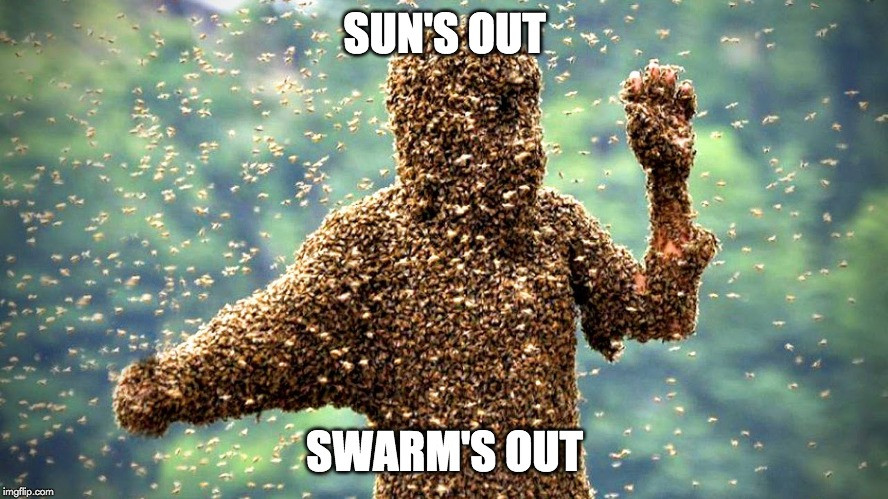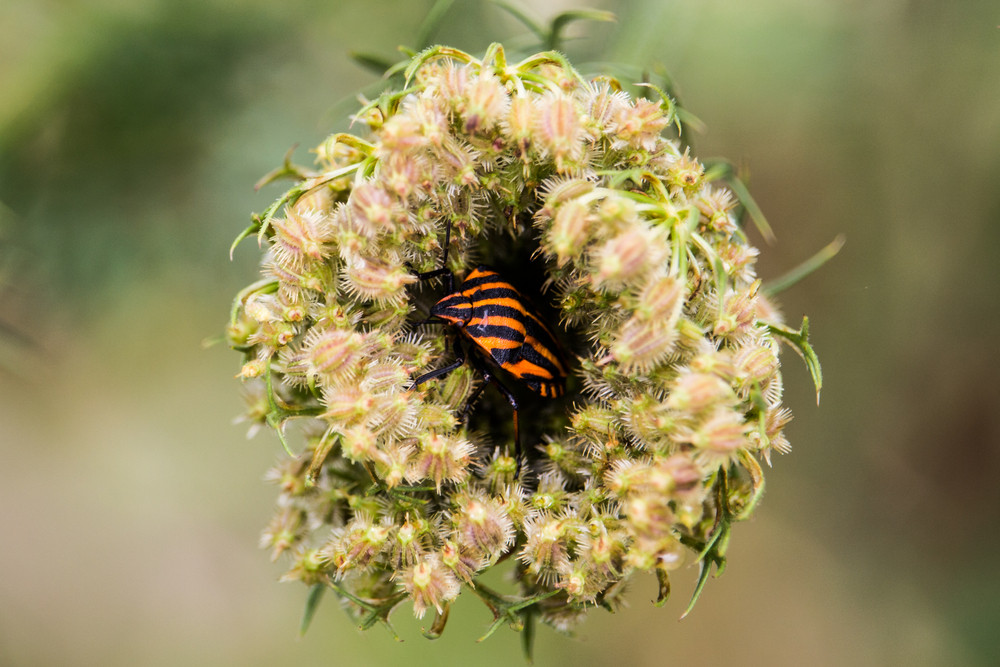A thunderstorm can be a welcome respite during a hot summer, bringing relief from the oppressive heat. Humans have various ways to deal with rain – umbrellas, waterproof clothing, and staying indoors. However, most creatures on Earth lack such conveniences. Insects, in particular, with their countless billions populating the planet and their reliance on flight, must frequently confront “falling droplets of death” from above.
So, how do these tiny creatures manage during a downpour? Where do flies and other insects disappear to when the skies open up?
Are Giant Insects Larger Than Humans Possible?
The Unique Challenges Rain Poses for Insects
Being small, agile, and capable of flight are generally advantages for insects. However, these same traits become liabilities when facing inclement weather like storms or cold temperatures. Insects are ectothermic, meaning their body temperature is dictated by their surroundings. When it’s cold, their metabolism slows, reducing their activity levels. Conversely, warmth energizes them.
 sun
sun
Rain adds further complications. Water accumulation increases an insect’s weight, demanding more energy for flight. For some insects, rain can cause their delicate wings to stick together, hindering flight. Combined with cold-induced sluggishness, insects become vulnerable and less nimble during storms. Furthermore, battling strong winds adds another layer of energy expenditure as they struggle to maintain course.
While their robust exoskeletons protect them from significant injury when buffeted against objects, enduring such conditions is undoubtedly exhausting.
Finally, consider the sheer force of raindrops. Falling at an average speed of approximately 10 meters per second (around 22 miles per hour), raindrops are relatively harmless to us. However, for insects the size of rice grains or grapes, this impact is monumental. A raindrop of comparable size poses a significant threat to these tiny beings.
Yet, observing nature reveals that insects, despite their size, possess remarkable and often ingenious strategies for coping with rain and storms.
Insect Rain Survival Strategies: Seek Shelter or Seize the Day
When rain begins to fall, many insects adopt the most sensible approach: seeking shelter. Numerous species exhibit sensitivity to barometric pressure changes, allowing them to anticipate approaching storms. In preparation, they find refuge by burrowing into logs or underground, or by taking cover beneath leaves, undergrowth, rocks, or even the eaves of buildings – essentially getting out of the open sky and finding safety.
 Bug hiding in the bloom(Erik Jurman)s
Bug hiding in the bloom(Erik Jurman)s
However, not all insects prioritize hiding. Some are better adapted to withstand harsh winds and the impact of raindrops. Larger insects, such as beetles and dragonflies, are more resilient and capable of enduring raindrop impacts. They also possess greater control over their flight, even in windy conditions.
For certain insect species, rainfall actually triggers their mating season.
Leafcutter ants, for example, initiate their mating season after storms, typically in late summer or early fall. Queens and males emerge from their nests to fly and mate, a process dependent on rainfall. Without rain, mating does not occur.
In contrast to leafcutter ants, rain beetles emerge in the early morning specifically during rainfall. These beetles spend their entire lives underground. The rain prompts females to move closer to the surface and release pheromones. Male beetles then leave their subterranean habitats and fly through the rain to locate females.
Specific Insect Examples and Rain Adaptations
Mosquitoes: Riding the Raindrops
Remarkably, mosquitoes appear uniquely adept at surviving heavy rainfall, despite their delicate size and weight. Research indicates that mosquitoes don’t significantly reduce the force of raindrop impacts. Instead of resisting the impact, they essentially “ride the wave.” A mosquito may be forced downwards for a short distance before quickly escaping from under the raindrop’s influence.
Their bodies are covered in uniquely water-repellent hairs, and their light weight allows them to easily slide out from under the falling drop and resume their flight in search of a blood meal.
While being repeatedly bombarded and driven towards the ground might seem detrimental, this resilience gives mosquitoes an advantage. With many other insects seeking shelter, mosquitoes can capitalize on a less crowded environment to find food.
Bees: Huddling for Warmth
Rain often brings cold temperatures, posing another challenge. Honeybees combat the cold by shivering and huddling together for warmth. They also rapidly flutter their wings. The wing muscles generate heat, helping maintain a warm temperature within the hive.
Snow Fleas: Natural Antifreeze
The snow flea has an even more specialized adaptation to cold weather. This tiny creature produces an antifreeze protein in its hemolymph (insect blood). This natural antifreeze prevents them from freezing in winter conditions.
A Final Word
Just as most humans prefer to avoid walking in the rain (though some enjoy it), most insects instinctively seek cover to avoid getting wet and cold. However, as we’ve seen, diverse strategies exist in the insect world. While many hide and wait for storms to pass, certain species actively exploit the opportunities that rainfall presents, whether for mating or feeding. The next time it rains, remember the hidden world of insect activity taking place, a testament to their remarkable adaptability and resilience.
References
- NASA Global Precipitation Measurement. (n.d.). How Fast Do Raindrops Fall?. https://gpm.nasa.gov/resources/faq/how-fast-do-raindrops-fall
- Ask A Biologist. (n.d.). Leafcutters in Spring Action. Arizona State University. https://askabiologist.asu.edu/leafcutters-spring-action
- University of California Agriculture and Natural Resources. (2016, December 16). Rain Beetles Emerge With Winter Storms. https://ucanr.edu/blogs/blogcore/postdetail.cfm?postnum=19974
- Science ABC. (2019, November 26). What is Metabolism? Anabolism and Catabolism. https://www.scienceabc.com/humans/what-is-metabolism-anabolism-and-catabolism.html
- Science ABC. (2020, February 19). What are Pheromones and Why Do Animals Use Them?. https://www.scienceabc.com/nature/animals/what-are-pheromones-and-why-do-animals-use-them.html
- Science ABC. (2020, July 15). Blood and Its Components. https://www.scienceabc.com/humans/blood-and-its-components.html
- Jiang, Y., et al. (2012). Mosquitoes survive raindrop impact by exploiting drag forces. Proceedings of the National Academy of Sciences, 109(25), 9821-9825. https://doi.org/10.1073/pnas.1205446109
- Pertaya, N., et al. (2009). Structure and Function of Antifreeze Protein from Snow Flea. Biochemistry, 49(2), 210-222. https://doi.org/10.1021/bi901929n
